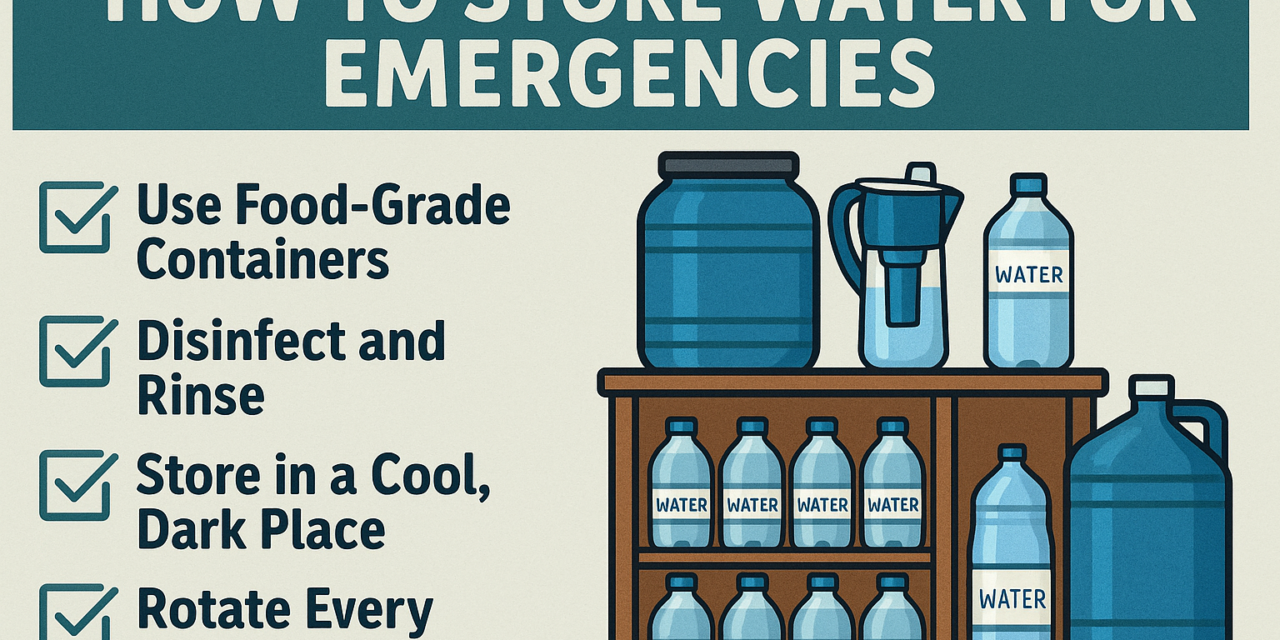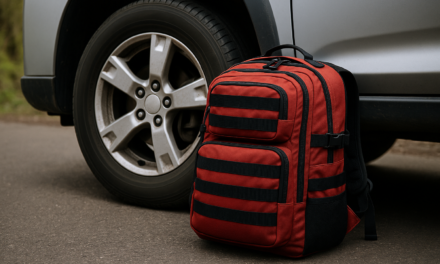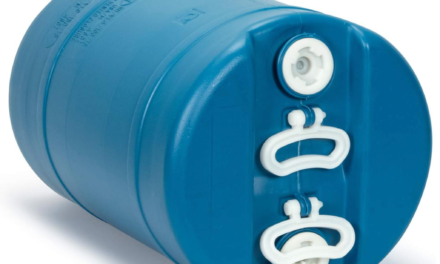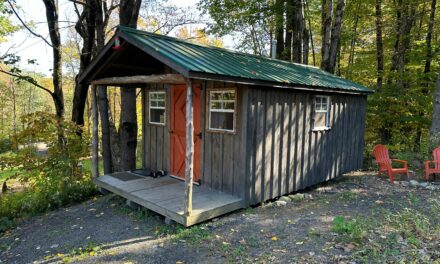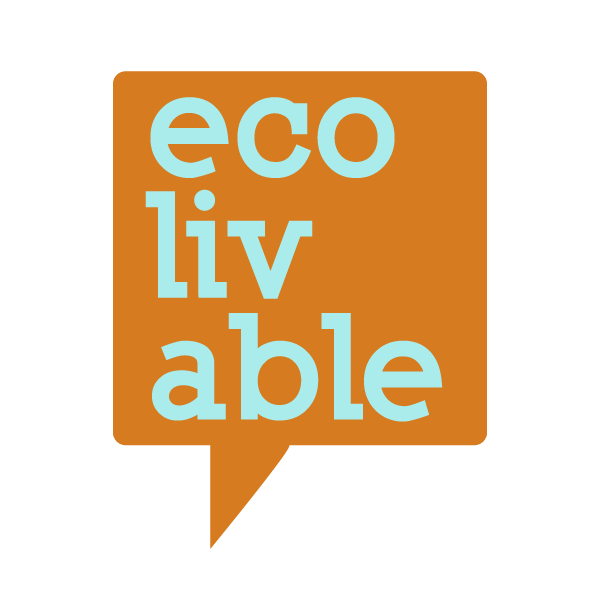Knowing how to store water for emergencies is one of the most important skills for disaster preparedness, because without a safe supply you can only survive a few days—and even less in extreme heat or during illness. Having a clean, reliable reserve ensures you and your family are ready when normal access to water is disrupted.
This guide covers the amount of water you should store, the best containers, treatment methods, and tips for long-term storage.
How Much Water Should You Store?
The FEMA recommendation is at least one gallon per person per day for a minimum of three days. This covers both drinking and basic sanitation. For better preparedness, aim for two weeks’ supply.
Example:
Family of four × 1 gallon × 14 days = 56 gallons of water.
If you live in a hot climate, have children, or care for someone who is ill, you may need more.
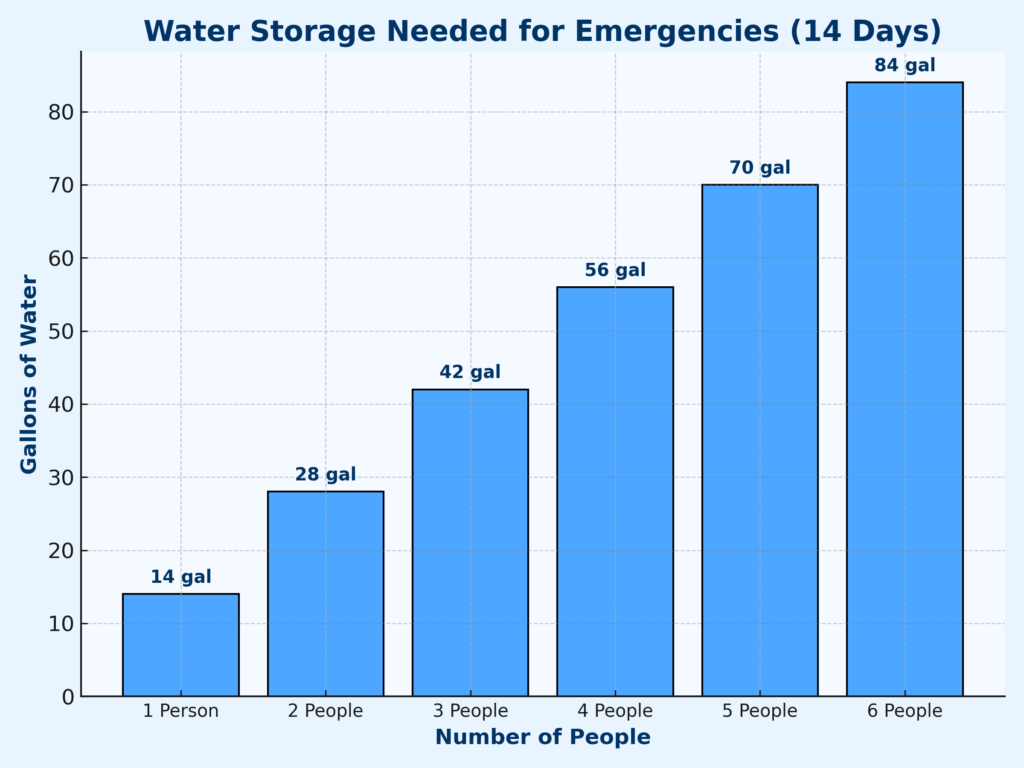
Choosing the Right Containers
Not all containers are safe for storing drinking water.
Look for:
- Food-grade plastic (marked “HDPE” #2)
- Glass containers (if kept in a cool, dark place)
- Stainless steel (for short-term storage without chlorine treatment)
Avoid containers that previously held non-food items (chemicals, detergents, etc.).
Common Container Options
- Two-liter soda bottles – inexpensive and easy to clean
- 5–7 gallon water jugs – portable and durable
- 55-gallon water barrels – good for long-term bulk storage
- Stackable water bricks – compact and versatile
- Collapsible containers – for short-term use or transport
Cleaning and Preparing Containers
Before filling your containers:
- Wash with warm, soapy water.
- Rinse thoroughly.
- Sanitize with a solution of 1 teaspoon unscented household bleach per quart of water.
- Rinse again with clean water.
Filling and Treating Water
If using municipal tap water, it’s usually already treated. Just fill your containers, seal tightly, and label them with the date.
If using well water or an untreated source:
- Treat with unscented household bleach: 1/8 teaspoon (8 drops) per gallon of clear water.
- Stir and let sit for 30 minutes before sealing.
For cloudy water, double the bleach amount or filter first.
Storage Conditions
To keep water safe for months or even years:
- Store in a cool, dark place (50–70°F is ideal)
- Keep containers off concrete floors (place on wood pallets or cardboard)
- Avoid direct sunlight to prevent algae growth
- Seal tightly to prevent contamination
Rotation and Maintenance
Even properly stored water should be rotated.
- Replace every 6–12 months if untreated
- Treated, sealed containers may last up to 5 years (check manufacturer guidelines)
- Clearly label storage dates on each container
Backup Water Sources
In addition to stored water, have ways to collect and purify more if needed:
- Water filters (LifeStraw, Sawyer Mini)
- Water purification tablets
- Collapsible containers for collection
- Knowledge of local natural water sources
Quick Checklist – Water Storage for Emergencies
- Food-grade storage containers
- Cleaning and sanitizing supplies
- Unscented household bleach
- Long-term water storage location
- Water filters or purification tablets
- Backup collection containers
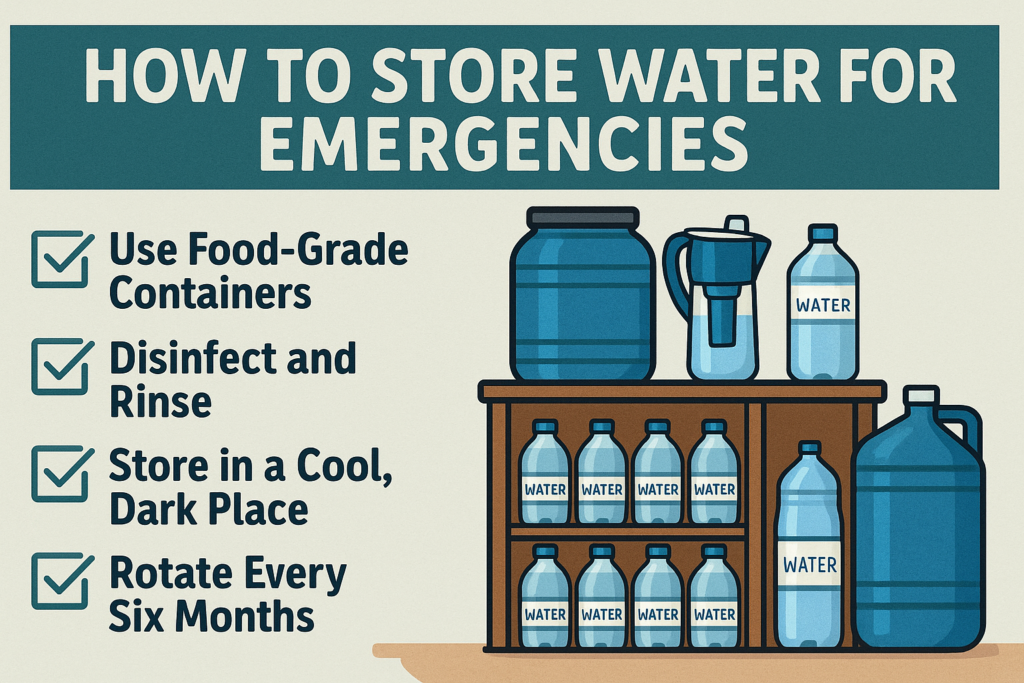
Final Thoughts
## Quick Checklist – Water Storage for Emergencies Ensure containers are filled, sealed tightly, and labeled with the date. For cloudy water, adjust bleach levels or filter as needed. ## Storage Conditions To maintain water quality for extended periods: ## Rotation and Maintenance Remember to regularly rotate stored water. ## Backup Water Sources Plan for additional collection and purification methods if necessary. ## Final Thoughts Knowledge of /how-to-store-water-for-emergencies is vital for safeguarding your household in crises. Begin with the recommended amount and incrementally build your reserves. Proper containers, treatment, and storage practices ensure water safety for an extended duration.

